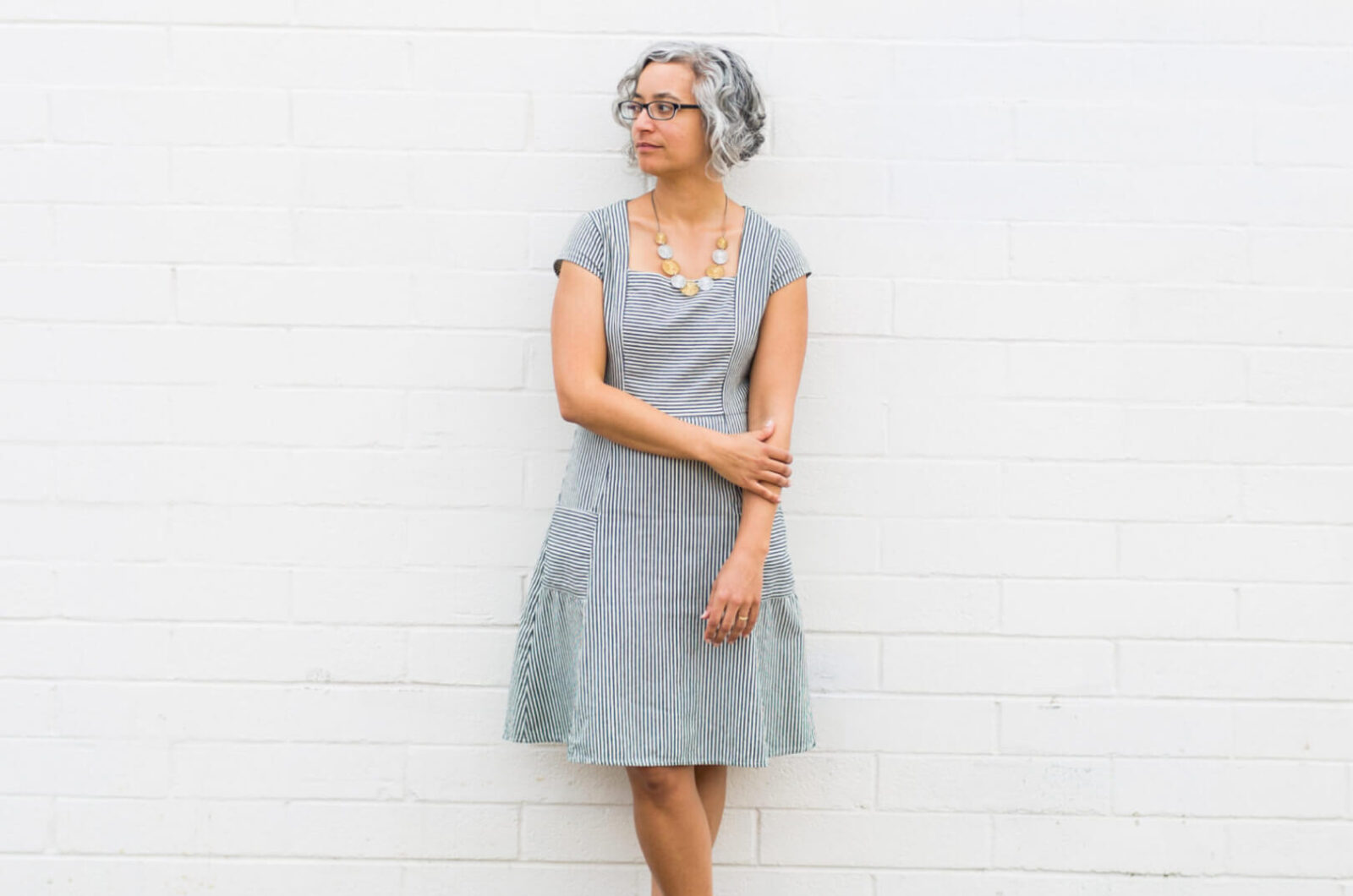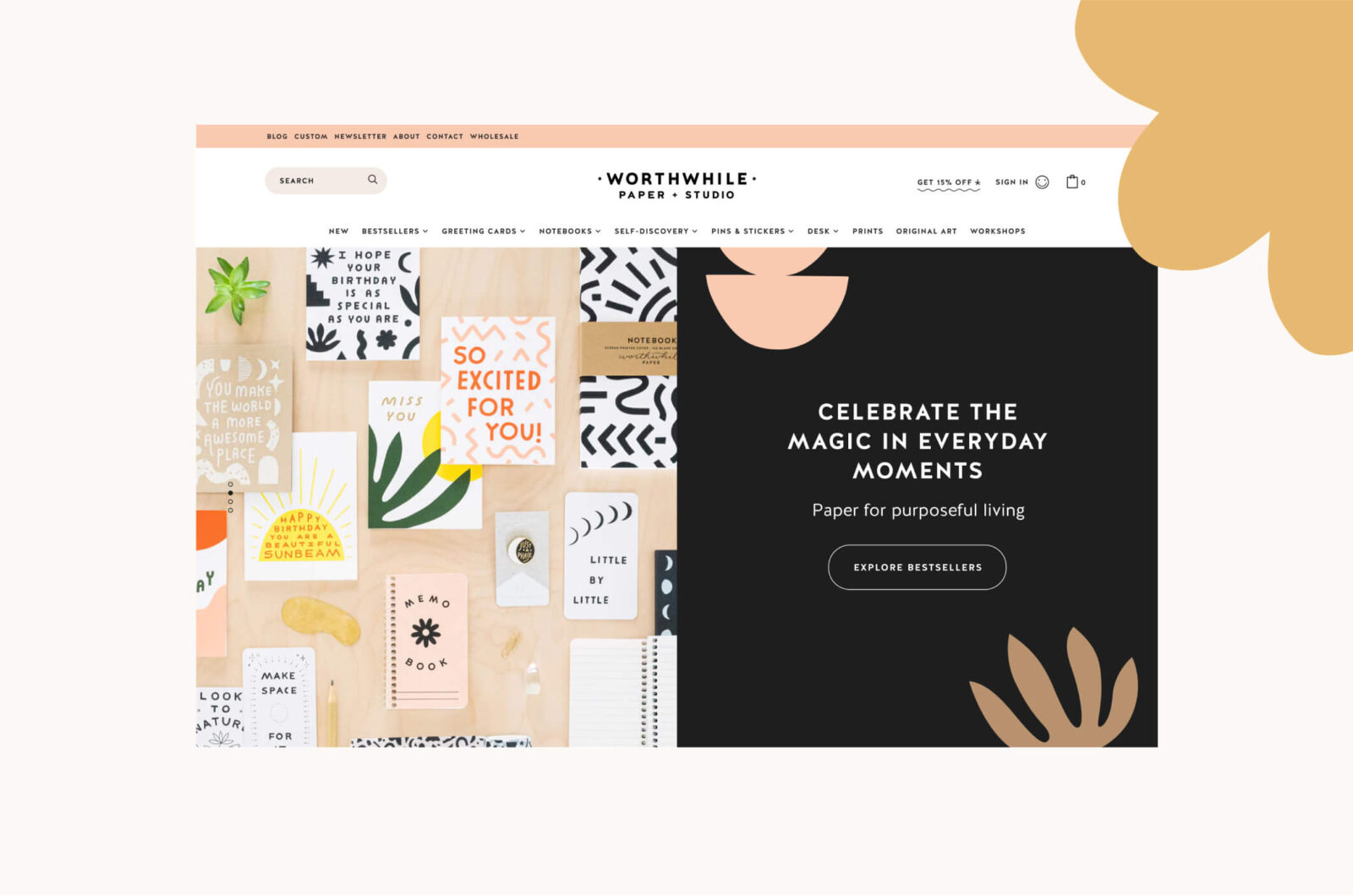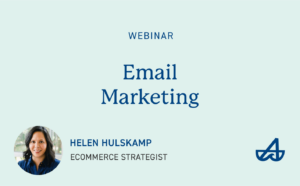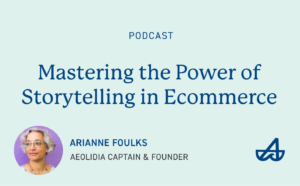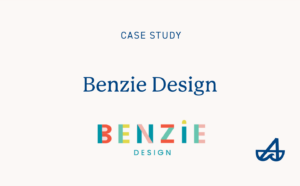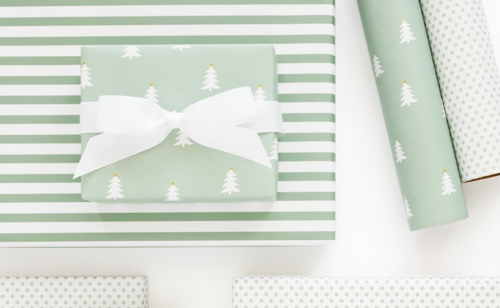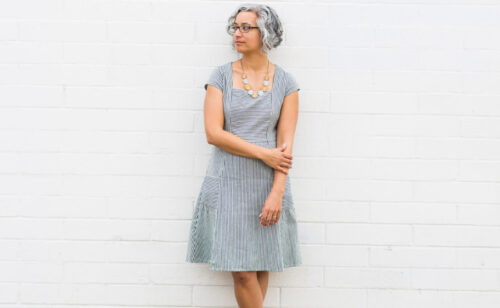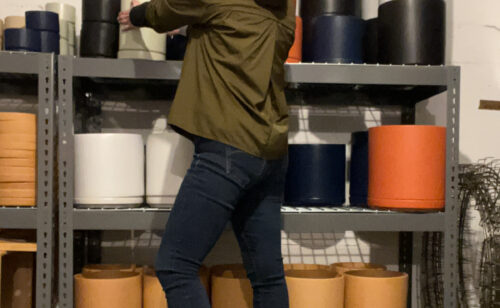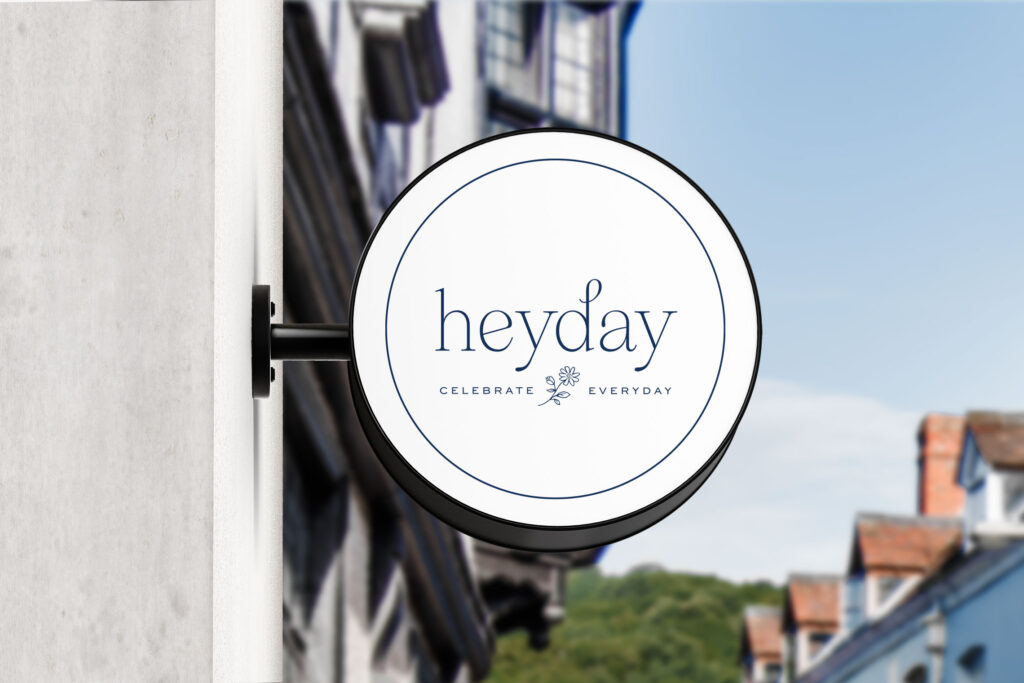
Today’s blog post comes to us from Katherine Raz, a guest expert in our community and the owner of Fernseed, a plant and flower shop in Tacoma, WA.
My friend is pivoting her storefront from an event space to a retail business this year. On the one hand, I’m thrilled because her shop is a block from Fernseed, and we need more retail on this stretch of street.
However, I can’t help but laugh at my internal reaction as she’s telling me she’s planning on pivoting to retail.
Why would you want to go and do a thing like that?
Watching her curate and plan the new shop, I have the same feeling I have watching pregnant-for-the-first time friends decorate a baby nursery.
Remember when we thought our kids would actually play with Haba wood toys? When we thought we’d use our maternity leave to make healthy smoothies and wash cloth diapers while the baby napped?
You have no idea what parenting will be like until that baby arrives. Before that, it’s all Pinterest boards and assumptions. The baby is what makes your choices real.
Retail is no different. You go in telling yourself all the cute ways in which you’re going to engage the community and decorate, but none of it means anything until you open the doors and real customers interact with your business.
So I started thinking about what my advice would be to someone opening a brick-and-mortar retail shop for the first time, starting with the moment those Pinterest boards become reality because you’re spending $30-60k turning pictures into a physical space.
Here’s what I’ve got.
Don’t be too precious about your opening inventory
People who start retail shops like to curate. They’re the people who gift Hedley & Bennett aprons and fancy pour-over supplies because they know quality and they enjoy connecting people with their tasteful finds. These are great skills to have!
But when you’re stocking your first retail shop, you’re really just embarking on a giant shopping trip with yourself as the target customer. You’re buying what you like, and that is both inevitable and problematic. Until you open those doors, you have no idea yet what your customers will buy. Even if you started as an online shop, your brick-and-mortar audience will shop differently.
You may think you know what people will buy because you’ve seen similar things in other shops, but this research is misguided.
First, you can’t assume that because something is on the shelves at another boutique that it’s actually selling for them. You also can’t assume that if something is selling at one shop, it will sell at yours. You don’t know your customer yet.

Let me give you an example.
When I first opened Fernseed I found these MQuan ceramic bells online and I was all about selling them at the shop. Then I saw them hanging in the window of a shop right down the street, so I scratched that idea. Five years later I find myself staring into the windows at Lapis, looking at the bells, and I think, “Those would never sell at Fernseed.” At least not frequently enough—at $275 a pop—to justify the upfront cost of stocking the dozen needed to create an impactful display. Good for Lapis, not for us!
I know now that while I like the bells, my customer would not purchase the bells from Fernseed. I know that because I’ve spent five years buying for the Fernseed customer instead of curating only what I like. I learned the hard way how quickly one can lose money holding on to inventory that doesn’t connect.
Unfortunately there’s no way to avoid making early buying mistakes. You have to sink money into slow selling inventory in order to learn that it’s slow selling. Knowing that, here’s how I would approach inventory in the first 6 months.
- Buy the minimum quantity and only the minimum quantity from vendors, even if you’re paying more per unit, until you learn what sells. Don’t be enticed by bulk discounts or freight discounts! You’re not ready for that yet.
- Buy in a limited color palette. You don’t need to stock every available color. Your customers won’t know what’s missing. Pick two or three colors and restock the best selling ones. Add colors incrementally, seasonally, as you go. This is especially true for high priced items, and will be the difference between having $800 versus $2,400 tied up in inventory on a product line you’re not sure will sell yet. (I just figured this out 5 months ago, by the way.)
- Once you open, figure out the best way to discount and liquidate stock that isn’t selling. This might be a sale section of your shop or website. It might be a 20% off sale on a particular line or category. It might make sense to hold it for a community sidewalk sale if that sale isn’t too far out on the calendar. You can even bulk it all together and sell it on Facebook Marketplace! Just turn it back into cash as soon as possible. Cash is oxygen. Dead inventory is carbon dioxide. You must always be cycling out the carbon dioxide for fresh oxygen.
Don’t spend too much money on furnishings and build out
It’s tempting when you have funding—whether it’s cash in the bank, a credit line, or a high credit card spending limit—to think it’s okay to spend $900 on a display table. I caution you against this.
Engage in this exercise with me. Take $150 of that money you plan to spend on furnishings and go shopping. Visit some independent retail boutiques and buy some cute stuff! Treat yourself. Spend the entire $150 budget I just gave you doing this on whatever you want, not retail furnishings. (You’re not returning anything, either. Think of it as an investment in the indie retail community.)
Once you’re home with your new purchases, think back about the places you visited and the things you bought.
- Do you remember what the display furnishings looked like?
- Can you recall in detail their quality, whether they had scratches, what color they were?
- Did the display furnishings wow you?
For weekly tips like this, subscribe to our newsletter
"*" indicates required fields
My guess is that you didn’t even notice the retail furnishings at all, and if you did, it was because you’re going in there with “store owner” eyes and not like a true shopper. Shoppers do not notice the furniture, because good retail furniture doesn’t call attention to itself. Even now, after five years of running a retail shop, if I’m shopping at a boutique I have to pull focus like I’m looking at a Magic Eye painting to notice the things the merchandise is sitting on. No one sees it, not even shop owners. Because no one sees it, you can go cheap on furnishings, especially in the beginning.
- Buy pieces that are easy to move. Modular, lightweight furnishings that make it easy to build and deconstruct larger display units are your friend.
- Seek out pieces that have tiered levels, but don’t buy a $400 display unit when a spice shelf you can score at a thrift store for $9.99 has the same function. Ask yourself, “What does this, but is cheaper?” A boxy, multi-tiered floor display could be $600 as a custom product on Etsy or you might find it on Chewy.com for $60 because it’s literally a pet staircase.
- Watch how customer traffic flows through your shop and change where displays go based on where the natural stopping points and dead zones occur. Look for the desire paths, then build to support them rather than forcing an unnatural traffic pattern.
- Once you’ve figured out your best-selling products, furnish around them. This is a constantly unfolding and improving process that takes years, which is why you don’t want to get stuck with an expensive display unit that doesn’t support the product storytelling you won’t know you need in the beginning.
Be something to someone… or you will be nothing
You’re not going to start a successful retail shop just by occupying a storefront and filling it with cool things you like. This is often the first step, and it’s not a misguided one, but your initial launch and collection should be like raw stone you’re chipping away at to arrive at a finished sculpture.
In order to be successful, you have to ask why. Why does a customer shop here? Maybe you don’t know that in a concrete way yet and that’s okay. Maybe you’re saying, “Someone will shop here because I have great taste and they like the products.” While this may be partially true, the real nugget of why is even simpler, even more niche than that.
Let me explain.
I used to think it was smart to be “brunch adjacent.” As in, you locate your retail shop close to a place where people are regularly waiting in line for brunch.
I thought I was so smart for thinking this! It makes so much sense. People leave the house for brunch, then they wander into your little space and ooohhhh look at those cute earrings. Right?
While yes, it is the case that people do wander in before or after brunch (or coffee, or tacos) and casually purchase $14 things, brunch people rarely make the big purchases that sustain the business.
The people who make the big purchases that actually sustain the business are the people who adore your shop and make a regular habit of visiting it. They adore your shop because you’re a good curator, yes, but they make a regular habit of visiting it because you solve a problem for them.
What problem do you solve?
This is where I think I dialed something in correctly before opening Fernseed, in part because I was so terrified of failure that I needed to pin my belief on a tangible reason this shop made sense: because it was the only place in Tacoma you could purchase a house plant and a stylish indoor ceramic vessel in the same place.
It’s so simple and frighteningly niche, but it was motivated by an actual “problem” I had while shopping for house plants in Tacoma. Every place that had cute house plants had ugly pots, and any place that sold minimal, modern indoor ceramics didn’t sell plants. And that, my friends, was the “problem to be solved.” That’s what a business is.
A retail shop isn’t just a collection of things in a storefront. If it’s going to last a while, especially in this brutal economy, it has to continuously solve a problem for its target customer, and to evolve to solve new problems if that customer demands it.
I like examples, especially when we’re talking about “problems that businesses solve” because I want to demonstrate to you just how simple these “problems” are and how easily a business can solve them.
Peaks & Pints in Tacoma sells a huge selection of craft beers by the bottle and in mixed cases. It solves the problem of wanting to sample craft beers—and support local brewers—but not wanting to buy a 6-pack of one particular kind.
Lost Girls Vintage is a retail boutique in Chicago with several locations that sells a curated mix of vintage clothing and fun gifts and accessories. It solves the problem of wanting to dress and outfit your daily life in a way that expresses your unique personality. Lost Girls evolved with their customer early in the lifetime of their business by branching out of selling just vintage in order to better meet that need. I would argue that this decision is what has fostered their growth from a fashion truck into a beloved brand with a national following.
You know that ad campaign, “Hungry? Grab a Snickers”? Your store cannot exist without a problem (hungry) and solution (grab a Snickers). Think about what “hungry” is for your customer and how your retail shop is their Snickers.
Chicago used to have this amazing convenience store chain called White Hen Pantry. Their jingle was, “When you run out, run out to White Hen.” Brilliant.
That jingle (watch the video and you’ll never forget it) is a marketing positioning statement template.
When [your customer] [problem that happens], you run out to [your store].
Seriously, fill it in. What has to happen in a customer’s life in order for them to think of you?
Run out > White Hen
Hungry > Snickers
Need cute dress for 30th birthday party > Lost Girls Vintage
Buying plant for my office > Fernseed
See how mundane those reasons are? But you have to have one. What will yours be? How will you solve it in a way that generates a loyalty that can even penetrate big box store price discounts?
Figuring that out is what’s going to keep you going.
What inventory management software to use
I’m kidding. I mean, obviously I could tell you all the equipment and software we run on (and maybe I should and then include some affiliate Amazon links?), but what works for me might not work for you. You’ll figure it out. In fact, you have to figure it out because from now on, you’re making it up as you go. Get good at research? I guess that’s my final piece of advice.
Enjoy the ride! And for what it’s worth, remember: we’re all in this together.
Further Reading
- Break the Feast + Famine Cycle: Economic Forecasting for Retail Shops
- How to Choose a Location For Your Retail Store
- Retail Merchandising Tips (Learned While Running a Pop-Up Market)
Do you have any questions or comments for Katherine? Please add them to the comments below.
This blog post was originally published by Katherine Raz on Storefront Revolt, February 1, 2024.
A Newsletter That Goes Beyond Shopify 101
It’s easy to find beginner info about ecommerce online. If you’re past that? Subscribe to our newsletter for advanced strategies and need-to-know info for established shops. You'll get:
- Weekly tips to help you market and sell your products
- Updates when there is news that may impact your site
- Round ups of interesting links and info for brands
- Invites to our live trainings and webinars
- Instant access to our past emails
"*" indicates required fields
Related Posts
Let's take your online shop to the next level
The Shopify websites we design have a reputation for substantial improvements to ecommerce conversion rates and online sales. Let's talk!


